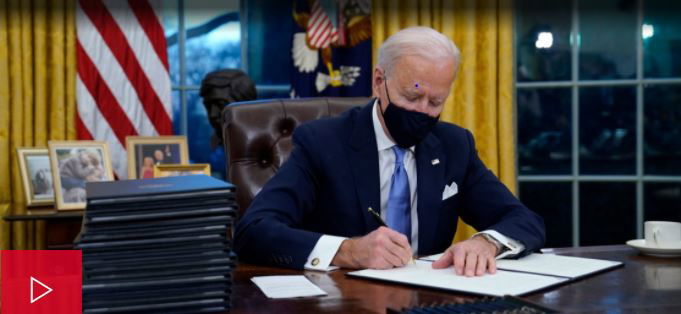Reversing Policies: In a Country of Checks and Balances


Photo Courtesy: Politico
According to Washington Post Report of Jan 20, 2020, ‘President Biden signed a blizzard of executive orders Wednesday…launching a cascade of directives reversing policies of his GOP predecessor…”
According to the same report, “Jen Psaki, the new White House press secretary, noted that the 15 executive actions and two additional agency directives were far more than the two orders Trump signed on his first day four years ago.”
It is simply amazing. However, a question that may interest many is: When a new President reverses the policies of his Predecessor, does he do it, in a country based on the principle of Checks and Balances, of ‘a person’ or of ‘a group of persons’,?
As is well known, the U.S. Constitution is full of checks and balances of the three branches of government. The best example of checks and balances is that the president can veto any bill passed by Congress, but a two-thirds vote in Congress can override the veto.
Some other examples of checks and balances are:
The President can make treaties, but only with a two-thirds agreement from the Senate.
The President can appoint Supreme Court judges, but the Senate must approve these choices.
Supreme Court judges have the power to declare Presidential actions as unconstitutional.
Congress can amend the Constitution, which means they can override a Supreme Court decision.
Not too long ago, the Supreme Court held that Congress overstepped constitutional boundaries when it insulated the CFPB’s Director from the President’s removal power.
Problem may be Press (reporting)!
God bless us. God bless America!
DISCLAIMER: The author is solely responsible for the views expressed in this article. The author carries the responsibility for citing and/or licensing of images utilized within the text.
